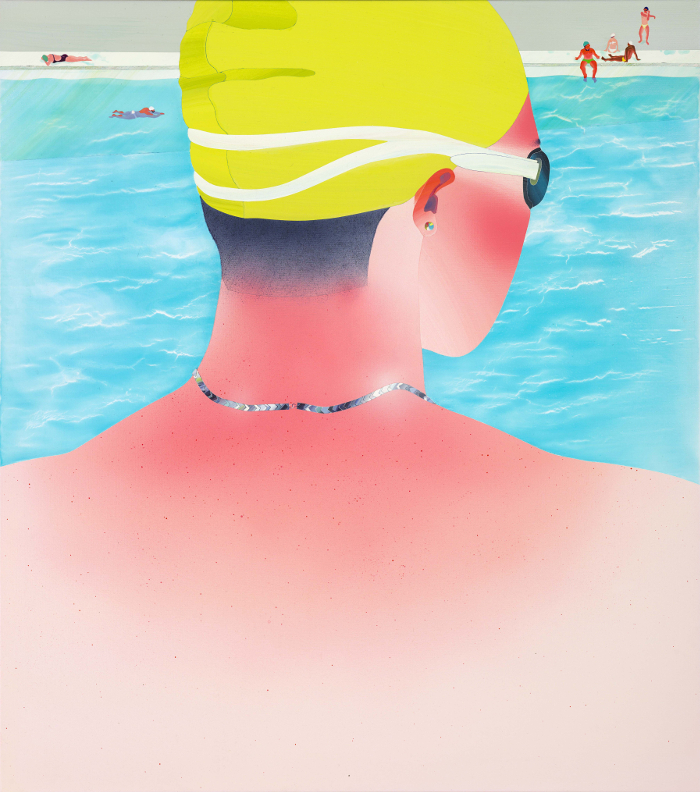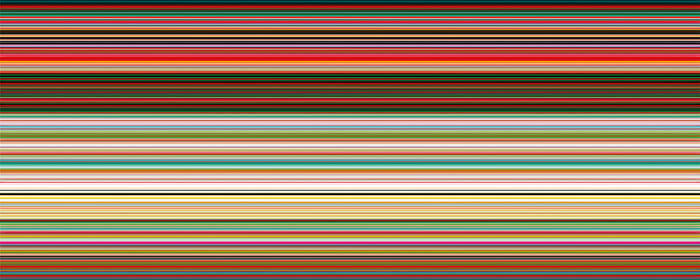Analysis
High Six-Figure Sales Boost Art Taipei
Budi Tek and Leo Shi were among the collectors at the fair's 21st edition.
Budi Tek and Leo Shi were among the collectors at the fair's 21st edition.
Sam Gaskin

In mainland China, Taipei has a reputation as a retirement town, its culture and commerce evolving much more slowly than they do in Shanghai and Beijing. Given the rapid rise and fall of art fairs in those two cities, however, many galleries in the region have welcomed the reliable Art Taipei, which 45,000 people attended last year, with sales exceeding NT$1.1 billion ($36.2 million). This year the fair entered its 21st edition, themed “Dear Art,” and with it the event continues to make some solid incremental improvements, earning it a reputation as the second-best in the region.
“It was a good fair, perhaps the best Taipei art fair so far,” said Lorenz Helbling, founder of ShanghART Gallery, Shanghai. “Nicely organized, more spacious than in the past and more even quality through the fair.”
Tina Keng, executive director of Taipei’s Tina Keng Gallery, was likewise happy with the results. “In recent years, the total value of transactions at Art Taipei has exceeded those of Beijing and Shanghai, coming in second only to that of Art Basel in Hong Kong,” she said.
Over 145 galleries from 15 countries attended Art Taipei 2014, which took place from Friday October 31 until November 3. Half the participating galleries were foreign, with most of them from northeast Asia—Hong Kong, mainland China, Japan, and Korea. While there were galleries from farther abroad, including Israel, Germany, the UK and the US, this year the organizers placed special emphasis on southeast Asian artists and galleries.
Directed by Eva Lin, the fair is jointly organized by the Ministry of Culture, the Taiwan External Trade Development Council, and the Taiwan Art Gallery Association. “Rather than emphasizing the global aspect, Art Taipei opts for creating an image of cultural conjuncture of northeast Asia and southeast Asia,” they said.

Fan Yang-Tsung, Shaped Sunburn (2014).
Courtesy of Aki Gallery, Taiwan.
The Young Artist Discovery section of the fair featured works by Indonesian artist Nurrachmat Widyasena (ROH Projects), Malaysian artist Khairudin Zainudin (G13 Gallery), and Filipino artist Lee Paje (Tin-aw Art Gallery), though it was largely dominated by Taiwanese artists. The government-backed fair gave older Taiwanese artists a strong nudge in the Classic Art Galleries section, and the idea of Taiwan as a technology hub—it is home to smartphone manufacturer HTC—was pushed in the New Media section.
There was a decidedly whimsical flavor to many of the most popular works with visitors in the more commercial Art Galleries section. These included Single Cloud Collection, a 3-D cloud created in layers of etched glass by Argentinian artist Leandro Erlich, and an x-ray photograph of a Boeing 747 by British artist Nick Veasey. An upturned ice cream cone melting into the floor by Californian artist Desire Obtain Cherish, a.k.a. Jonathan Paul, also caught eyes at the booth of Taipei gallery Bluerider Art.
Chinese galleries reported strong sales, with local galleries doing especially well. ShanghART Gallery said it sold work from most of the artists it showed, including photography by Chen Xiaoyun, installations by Lu Lei and Sun Xun, as well as paintings by Liu Weijiang, Zhang Enli, Wu Yiming, Han Feng and Shen Fan.
Taiwanese galleries were also pleased, with Eslite Gallery’s Haiping Chang reporting the sale of Taiwanese artist Su Wong-Shen to the Long Museum. Aki Gallery sold three pieces from Yang-Tsung Fan’s “Swimming Pool” series ($6,500-15,000) as well as Chan-Peng Lo’s oil on canvas painting Wanderer in the Mist, which went for about $80,000. Focusing on contemporary ink, Gallery 100 sold a work by Inoue Yuchi for $70,000, and a major piece by Li Huayi, entitled Mountains Hidden in Cloud and Mist for $800,000 to a collector who has a close relationship with the gallery.
Lucien Y. Tso, associate director of Gallery 100, said that the pace of Art Taipei was a bit slower than other fairs, with collectors taking their time to make decisions. Taiwanese collectors had the means to buy $500,000 works, he said, but “galleries from overseas felt disappointed about the sale performance here, because they seldom promote their artists here in Taiwan.” Foreign artists who have already shown in Taipei did much better at the fair, he said.
High-profile artists proffered at the event included Pablo Picasso, Salvador Dalí, Joan Miró, Marc Chagall, Zhang Huan, Ai Weiwei, and abstract painter Zao Wou-ki. Tokyo gallery Wako Works of Art showed Gerhard Richter’s Strip 926-2, a digital print that looks like a computer error from the years of 256-color VGA screens. Pumpkins by Yayoi Kusama are, of course, de rigueur at Asian art fairs.

Gerhard Richter, STRIP (926-2) (2012).
Courtesy of Wako Works of Art, Japan.
In addition to being thought of—unfairly—as a bit of a yawn, Taipei has a reputation as an unlovely city, and in this instance the venue doesn’t put up much of a counterargument. The Taipei World Trade Center is located at the foot of the city’s tallest building, Taipei 101, a blue-green glass tower whose silhouette resembles stacked Chinese takeout boxes. It resembles a hotel buffet raspberry mousse cake from outside, and inside looks more like a railway station, with the booths situated on the ground floor of a mammoth seven-story-high open atrium.
Nevertheless, galleries were complimentary about the event’s production and execution. “It’s really uplifting that many foreign guests told us that Art Taipei impresses them and the quality is perhaps way better than many other Asian art fairs,” said a representative of Asia Art Centre, a commercial gallery founded in Taipei in 1982. “The quality of the display of the whole fair is pretty high and the design of the booths and the aisles keep appropriate space for visitors, providing a pleasant experience.”
With some caveats, Tso broadly agreed with those sentiments. “The identity of Taipei Art Fair remains not very clear. There is no center idea or theme given to the fair. On the other hand, the fair was more well-organized comparing to other local fairs in the same region in terms of the facilities, quality of visitors, and the programs hosted by the fair.”
Galleries were also impressed by Art Taipei’s efforts to engage collectors, including a lecture series that gave a platform to major players Budi Tek, Leo Shi, Hallam Chow, and Powen Chen. “The organizer arranged lots of exclusive activities for VIPs—for example, the banquet in the National Palace Museum—and attracts lots of distinguished guests. For the past 21 years, Art Taipei has built a strong network and it’s really important to introduce Taiwanese art to these foreign guests,” said the Asia Art Centre representative.